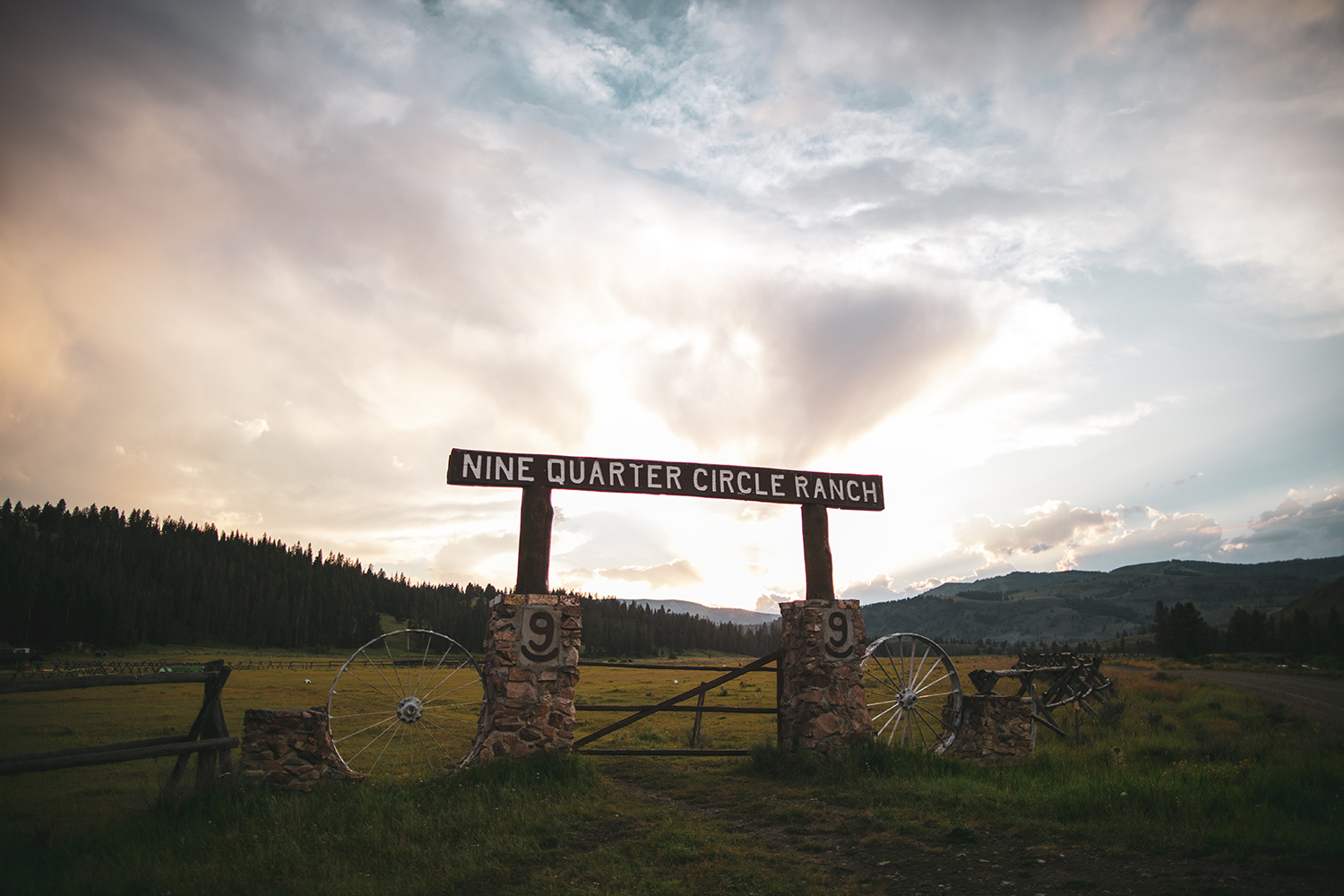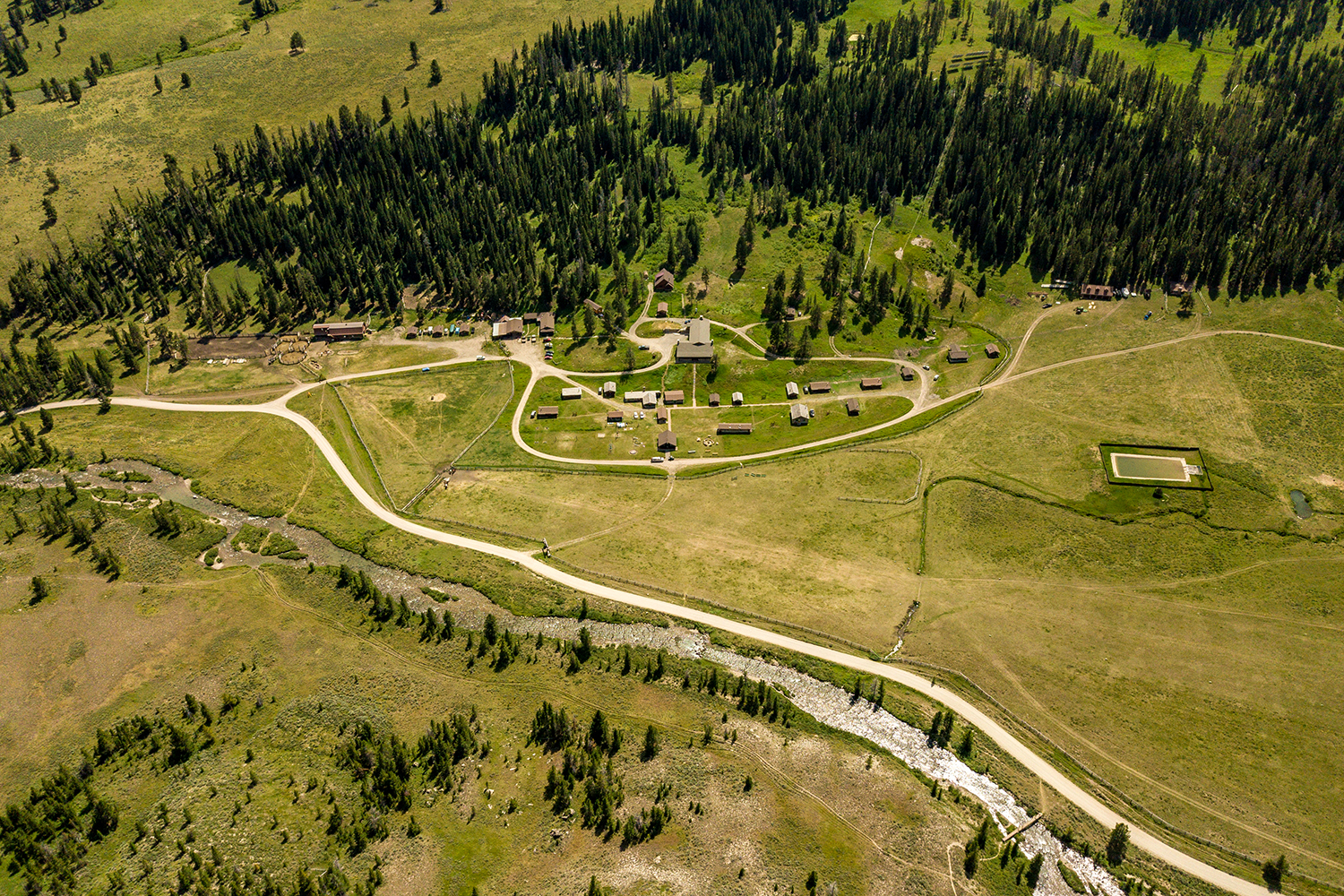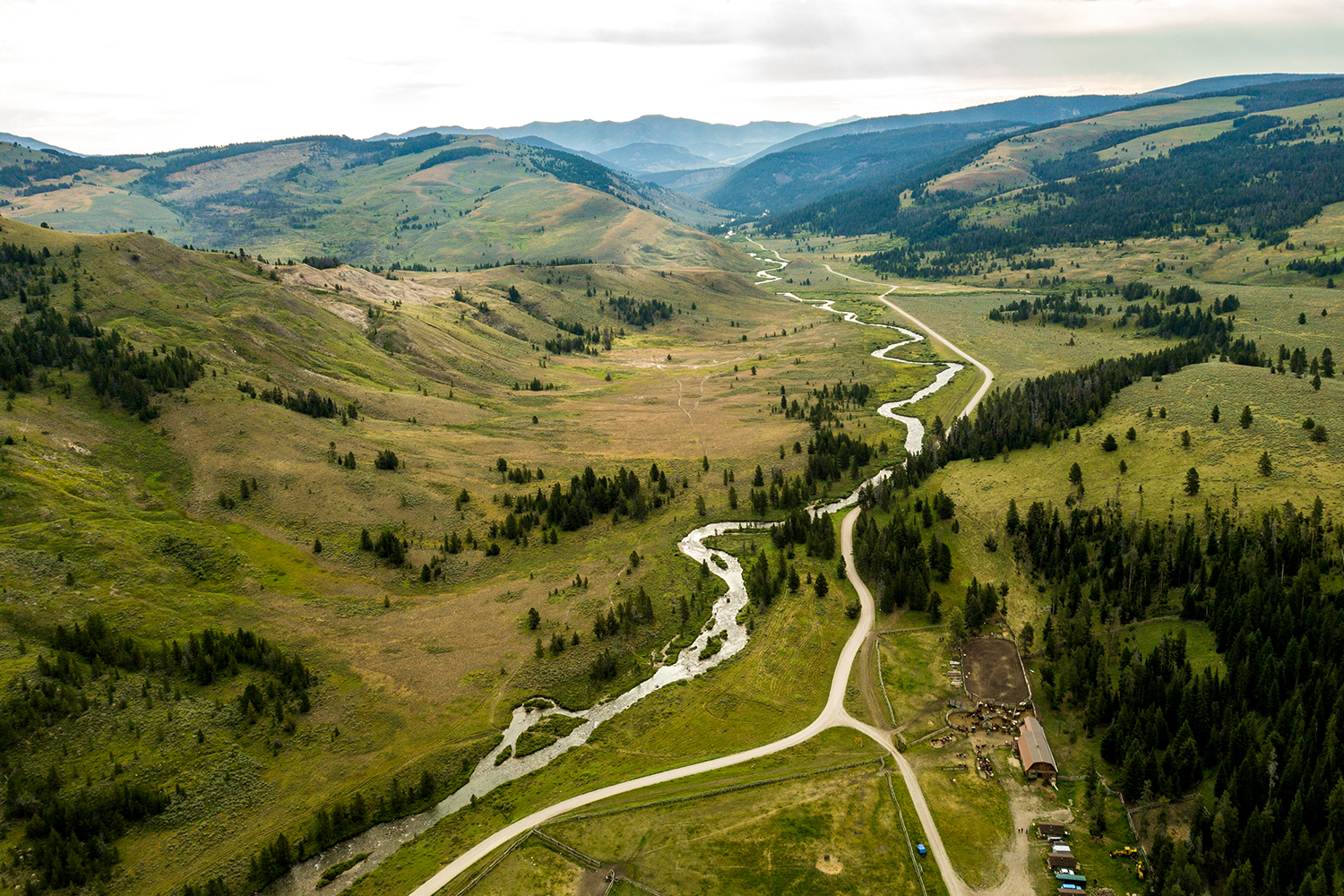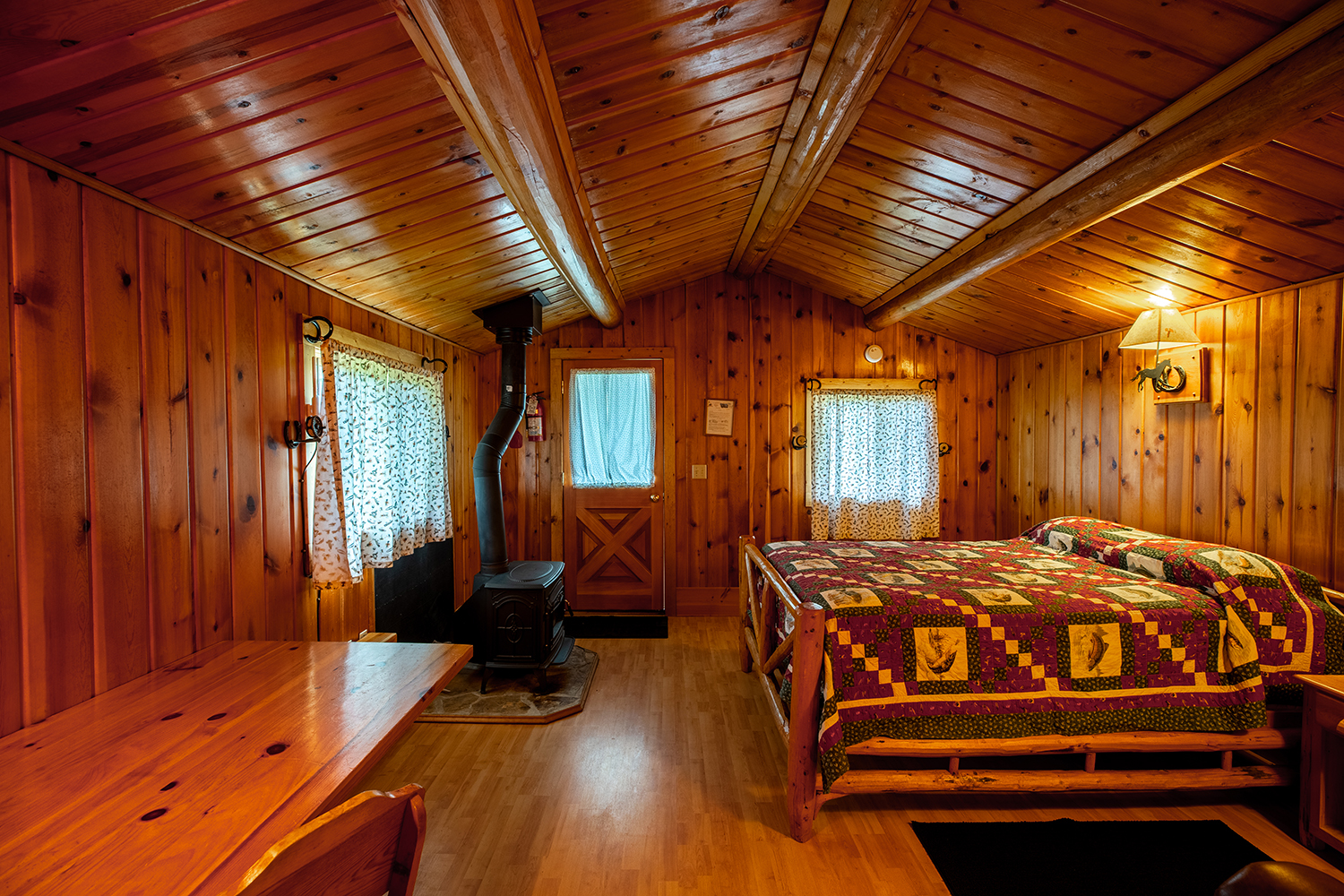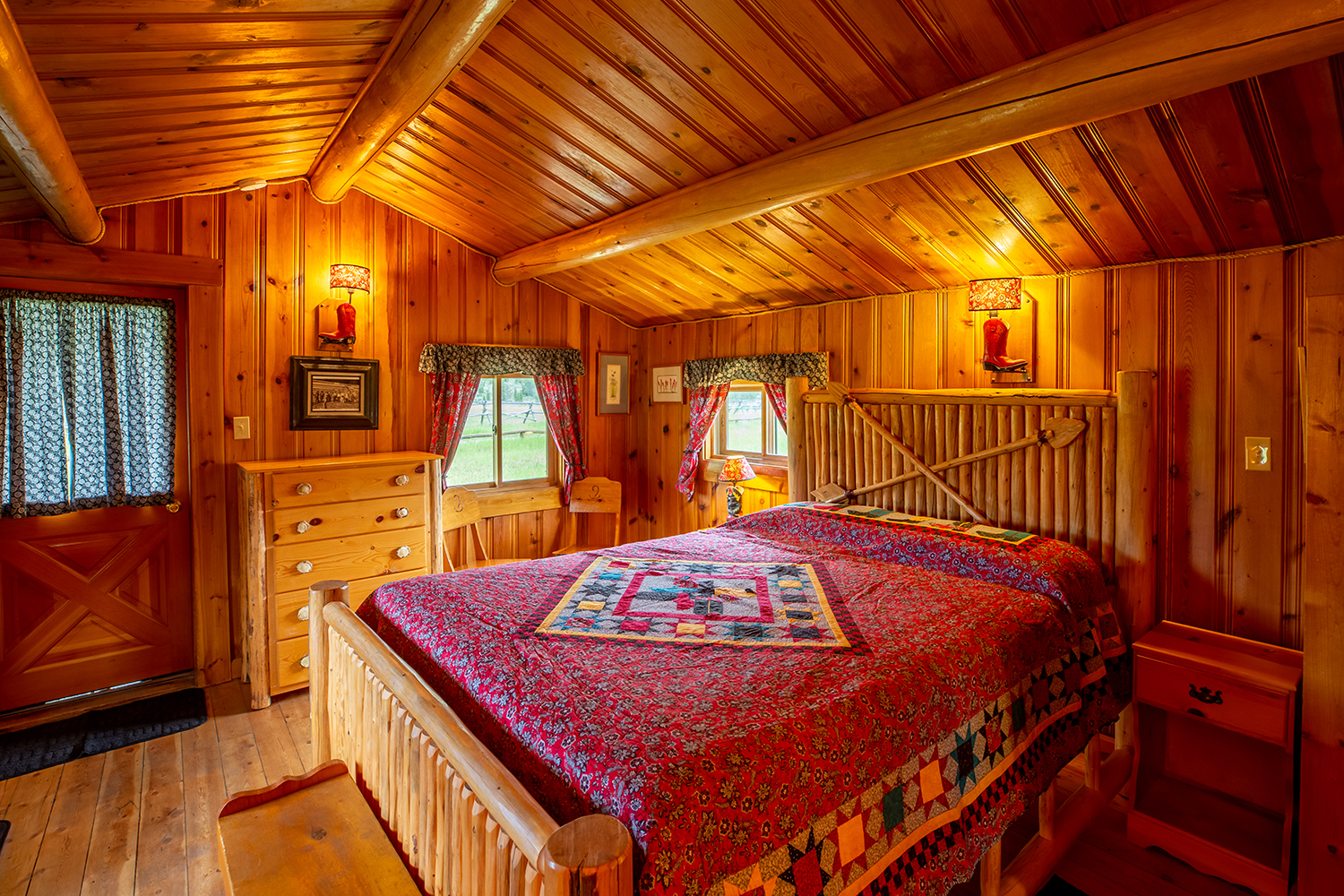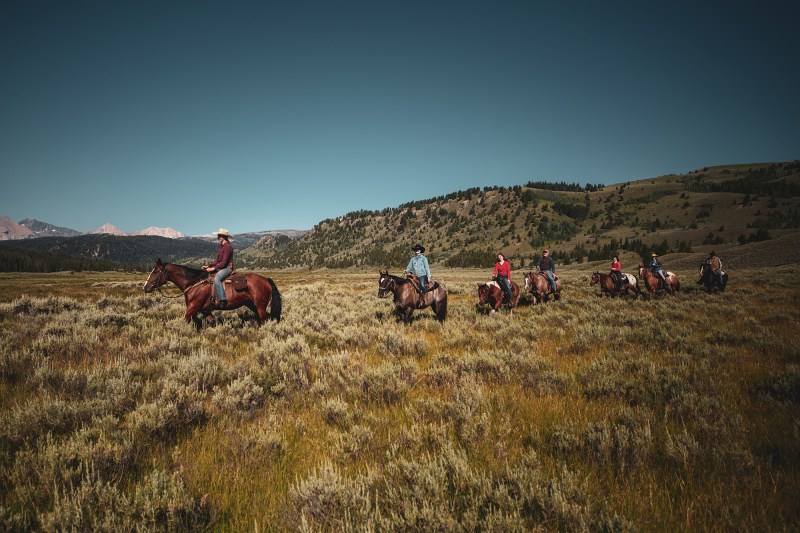
An hour and a half south from Bozeman, Mont., surrounded by millions of acres of national forest, Nine Quarter Circle Ranch has endured for more than a century. First homesteaded in the 1890s as a working cattle farm, it joined a growing number of properties across the West when, in 1912, it welcomed its first guest. It’s here, on one of the surprisingly younger dude ranches in the U.S., that Kameron Kelsey was born and raised.
“I had an absolute great childhood,” the 32-year-old tells The Manual. Breaking and training horses on the 1,000-acre ranch, fly-fishing its multiple rivers, Kelsey, like his father and his father’s father, relished the life, and despite the younger’s square-on Millennial status, he’s never wanted more than its loosely delineated borders — and that despite a five-year hiatus while studying at Cal Poly in Southern California. “Seeing a different way of life, that was cool,” he says, “but it ain’t as cool as what I’ve got.”
When observed from the right angle, Kelsey is a third-generation hotelier. He’s also a third-generation restaurateur, groundskeeper, marketing manager, and horseman, along with about a dozen other hats necessary in the day-to-day running of a dude ranch, also called a guest ranch. Despite his relative youth, he joins a small but stalwart American tradition that spans more than 150 years.
Read more: Best Places to Visit
History of Dude Ranches
Dude ranches began in the late 19th century. Eatons Ranch, established in 1879 and now located in Wyoming, may be considered the first official “dude” ranch, a kind of kid-brother pejorative describing the citified young men who came out in their store-bought clothing freshly starched for the grime of ranch life. But the genre’s origin doubtlessly began further back, at a date hard to pin down to the decade, let alone the day. Eastern settlers, working newly acquired Western plots of land, would invite their back-home relatives out for a kind of working vacation. Due to the primitive infrastructure of the U.S. at the time and the length of travel just to reach these remote locales, guests would remain for a month or three, working the land alongside their relations while experiencing a simpler lifestyle than big-city living.
These were mostly men, but sometimes young families would travel together, and at least at first, they were hardly “guests,” in the modern hotel definition. Rather, they were part of the ranch family, says Colleen Hodson, the executive director of the Dude Ranch Foundation for the past 20 years, and, prior to that, the 19-year executive director of the Dude Ranch Association (DRA). These Yankees would sleep in common rooms, eat their meals at the same table, and work withers to withers with the heads of the ranches moving cattle and mending fences in the dry Western air. Lean and tan, these young men would return to their Eastern enclaves with a hell of a story and the calluses to prove it.
“‘We could charge for this,’” Hodson says these ranchers realized, “‘because it’s an experience you can’t get anywhere else.’”
How Dude Ranches Became An Ivy-League Retreat
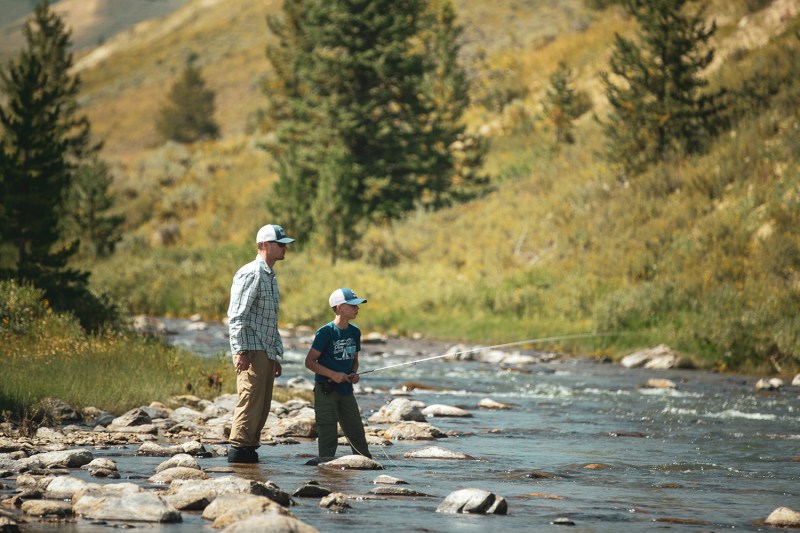
As interest from non-relations burgeoned, the pay-to-play dude ranch emerged in the 1920s, and the DRA, founded in 1926, was born as trade organization to establish a standard and accreditation for the growing number of ranches west of the Mississippi, as well as help them develop programming, navigate public land use (many depended and continue depend on this access), and act as a collective marketing arm. A deal struck with the railroads in the early 20th century, the only practical way to reach these ranches with any kind of speed, was particularly fortuitous and contributed to their proliferation, as did mentions of them in high-end magazines back East.
People from all walks of life, provided they had the cash, would come to stay, but in those early days, it particularly became associated with Ivy League-educated young men looking for the taste of the real. Celebrities also attended, and at one ranch, Bar BC, which has since come into the fold of Grand Teton National Park, both Ernest Hemingway and William Faulkner enjoyed residences. “They weren’t just doing a pleasure dayride,” Hodson says. “It was kind of a figure-out-on-the-job thing.”
The Great Depression and the World War II years were a time of contraction, but the second boom followed closely after VE-Day. Kelsey’s grandfather came in just after this time, abandoning a promising career with John Deere to purchase the ranch and, as the younger Kelsey says, “to hunt and fish and ride horses in the mountains” as a kind of self-medication from the things he had seen. Many men did the same, and the West’s world-class ski resorts are also the product of these men. Montana and Wyoming were the first to see the proliferation of ranches, but by the ‘50s and 60’s, Arizona had become known as the dude ranch capital of the world due to sheer numbers. Hollywood was equally enamored, and like Adam Sandler’s late run of straight-to-Netflix movies, these ranches would host TV and film crews as a kind of location shoot. Arizona’s White Stallion Ranch, outside of Tucson, has a running tally that begins in 1939 and has hosted a crew as recently as 2014.
The Decline of Dude Ranches
But with the rise of high-volume, all-inclusive Mexico vacations and Carnival, dude ranches again contracted in the late 20th century, according to Hodson — after all, when the average ranch hosts between 45 and 60 guests, going head-to-head with a 5,000-capacity cruise ship is a lopsided contest. Disposable income, tied to macro economics, is also a key component, and dude ranch futures have risen and fallen accordingly. While many old-time operators speaking longingly of another “City Slickers” event — a reference to the bumper crop of bookings that followed the release of the 1991 film — the reality is that the interest, somewhat buoyed by Hollywood, was simply following a generally affluent Nineties and then receded in the Aughts with the popping of the dot-com bubble. Public land policy and usage issues and the rapidly appreciating cost of Western private land also factor in, and some operators, making due for years on razor-thin margins, were happy to sell and walk away with a fat check. Hodson says that at the height of her career with the DRA, 135 ranches were members. At present there are only 92.
But with all these challenges, does that mean that dude ranches are a dying breed? “The ones that are here,” she says, “are here to stay.”
“What we do is preserve the Western way of life,” says Kelsey. “Everybody can have the internet and [technology] at home, but to take a step back and take a vacation where you’re just outside riding horses, fishing, doing the things that are pretty simple in life, [and] people find a huge amount of enjoyment in that.”
Ask Kelsey about what takes place at a “modern” dude ranch, and he sounds almost confused, as from his perspective, the phrase is an oxymoron: dude ranches are dude ranches, and the way of life now is almost exactly the same as it was in his grandfather’s and father’s tenures. Guests have multiple opportunities throughout the day to ride horses for hours at a time, and guides are available to fish its on-property and off-property rivers, streams, lakes, and ponds. Evenings are filled — but not packed — with cookouts and square dancing, campfires and s’mores. Connecting to its millions of surrounding acres of national forest, he says you can ride for days and not see another soul. Others around the U.S. might offer rock climbing, white water rafting, fat biking, and myriad outdoor rec opportunities.
Dude Ranches Today
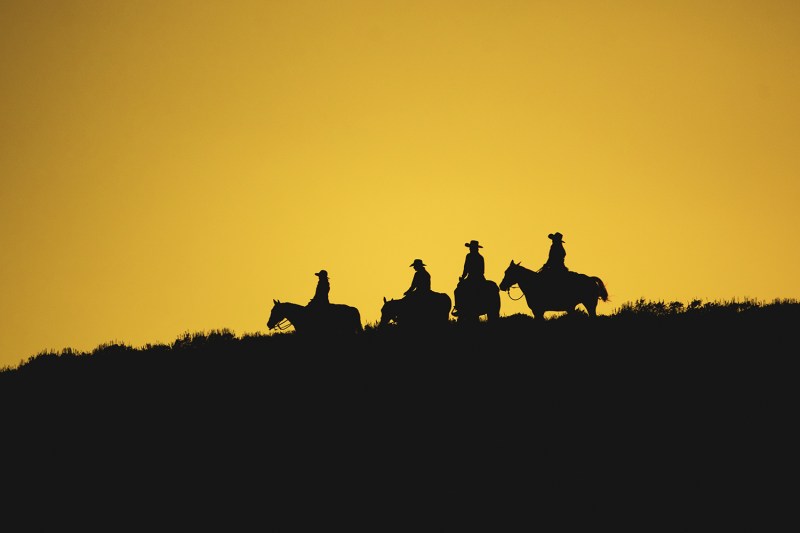
That’s not to say that the modern ranch doesn’t include a few modern amenities. There’s running water and hot showers and clean beds with fresh linens, and a few places around the property beam Wi-Fi for guests who just can’t totally detach from email. “But that’s not the main focus of why you would come to a ranch,” Kelsey says. “The whole point is to unplug and disconnect and get back to nature and be a part of the great outdoors, which is so rewarding to so many people.
“I truly believe that the outdoors is the driving force for these places,” he continues. After all, a city park or a public zoo has little in common with seeing a grizzly in the wild. “Once [guests] get out there on a horse and they’re up on the top of a mountain overlooking this huge pristine valley and it’s perfect and the weather’s nice, they don’t forget it.”
It’s no surprise, then, that these longtime lodges tend to have an incredibly high rate of return for guests, and Hodson, from her insider position, pegs it at 70 to 80 percent. “Lots of times, as soon as they get done with their vacation, they book for the next season,” she says.
Call it a COVID bump, but ranches around the country are seeing unprecedented demand for their few spots during the 2021 season, which, for many, is only three months. “Especially now, after Covid, this is just what everybody is looking for,” Hodson says. “It’s a good year to be a dude rancher.” Kelsey agrees. As of March 1, Nine Quarter Circle Ranch is completely booked for the season, a mark his business hasn’t seen since the dot-com boom of ’99.
But that’s not to say that he’s hung up his spurs.
A dude ranch is still a small-business affair. Of the property’s 35 buildings, one or more is always in need of attention, and this year his modest staff is hustling to complete a to-the-studs renovation of its kitchen. His full guest list “takes some pressure off,” he says. “but there are so many facets to a dude ranch that a lot of people don’t realize.”
Now in its third generation of family ownership and with more than a hundred years to its history, Kelsey and many of his peers are searching out opportunities to showcase what guest ranches have to offer in the digital space. They’re learning marketing from Dummies
But while the country continues to leave its Western roots behind, the modern dude ranchers are firmly embedded within a new-old past. Granted, there’s not a lot of time to think about it, especially with the new season nearly here. “No matter what we’re doing, we still have 120 head a’ horses,” Kelsey says, “and we’ve got to take care of them.”
Read more: Coolest Hidden Destinations
Editors' Recommendations
- Can a Travel Bag Save the World? Orra Is Trying
- Retracing the Late Anthony Bourdain’s Steps, and Thoughts, in ‘World Traveler’

